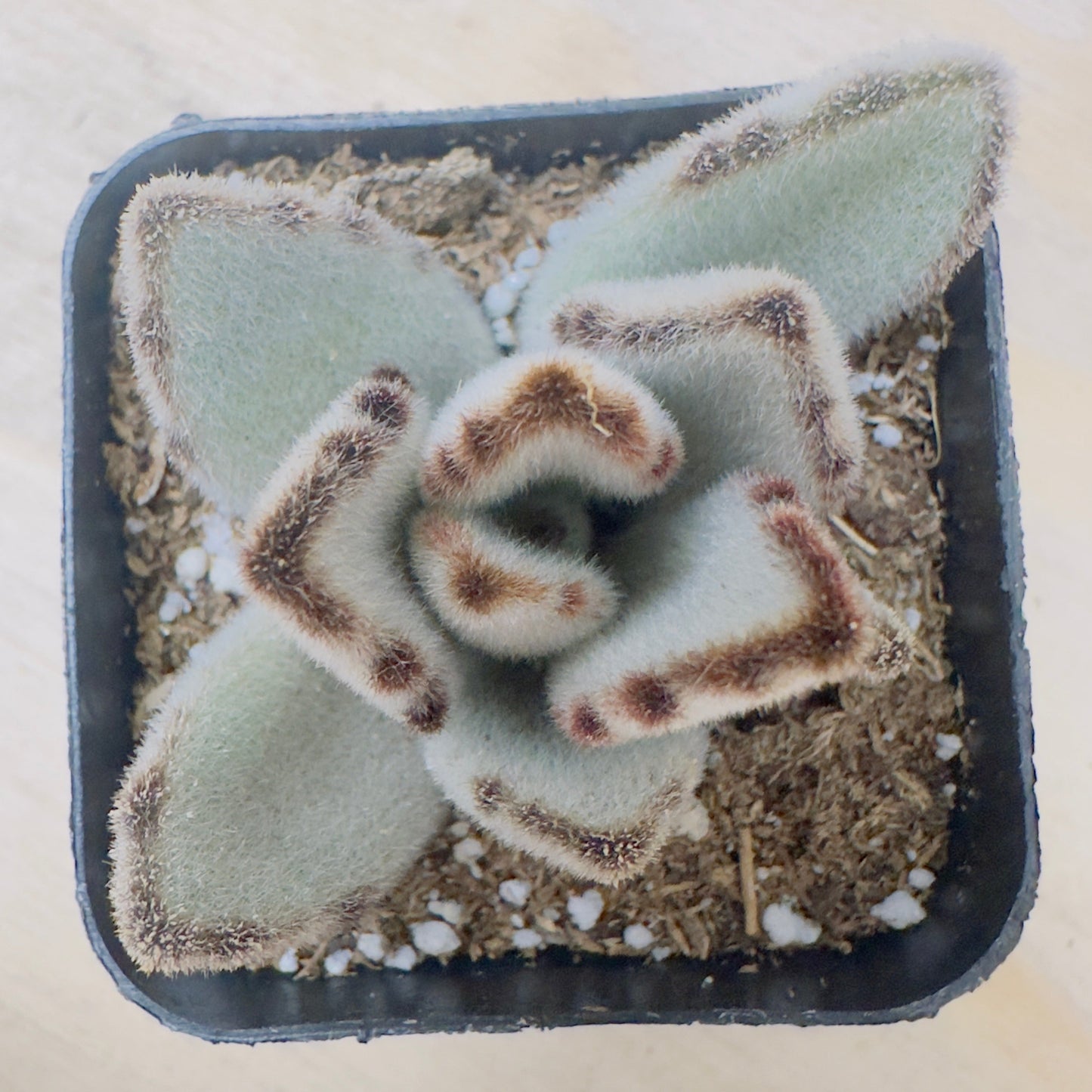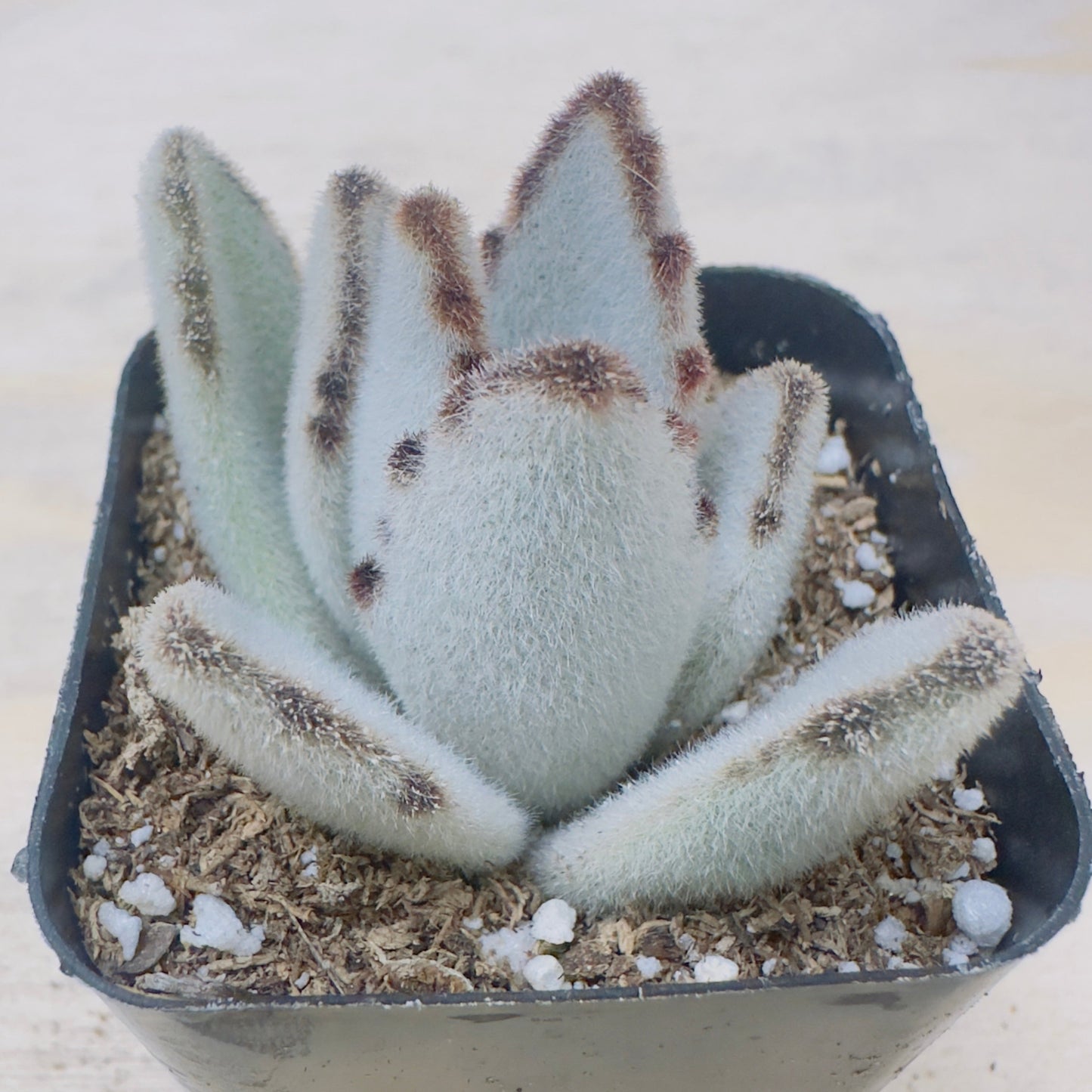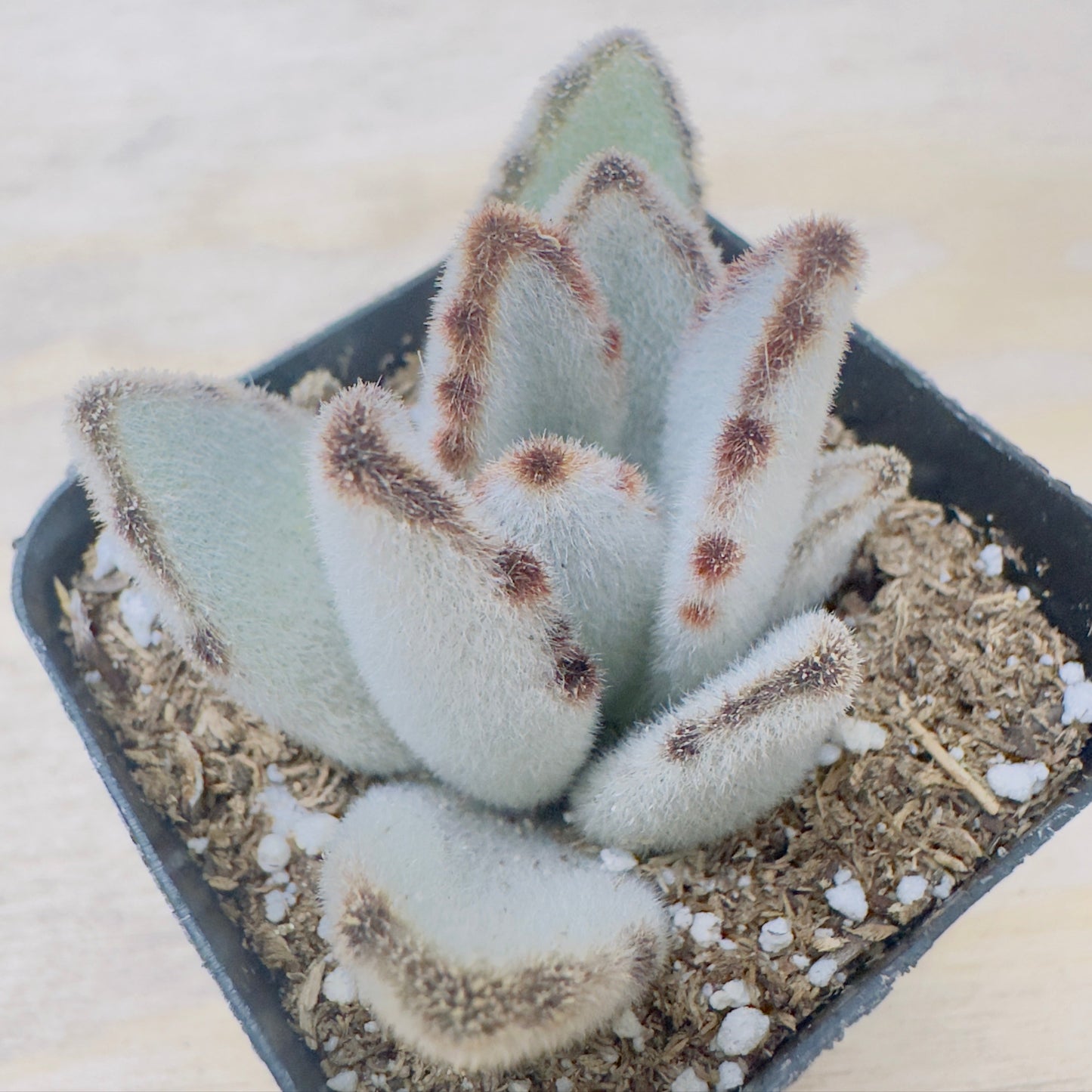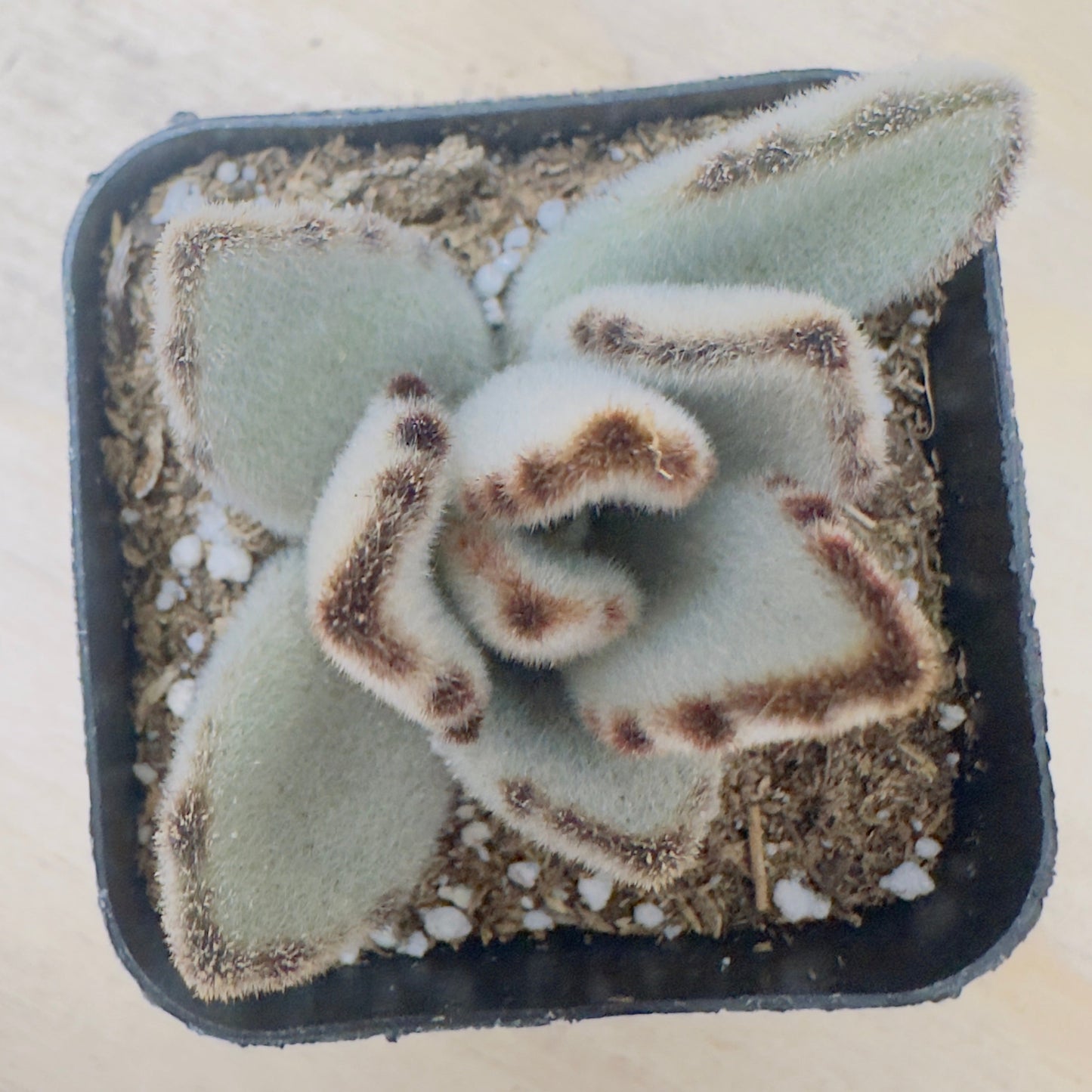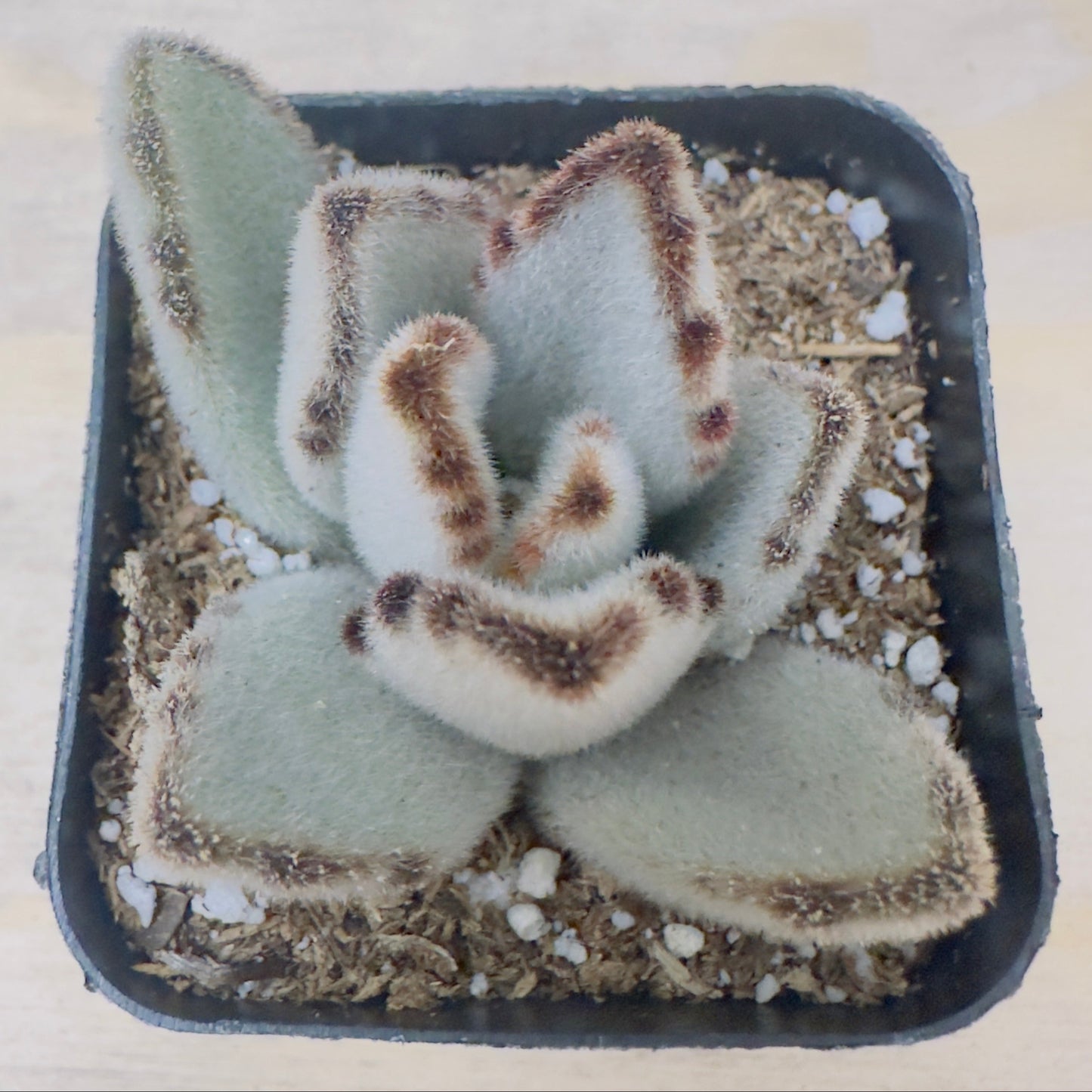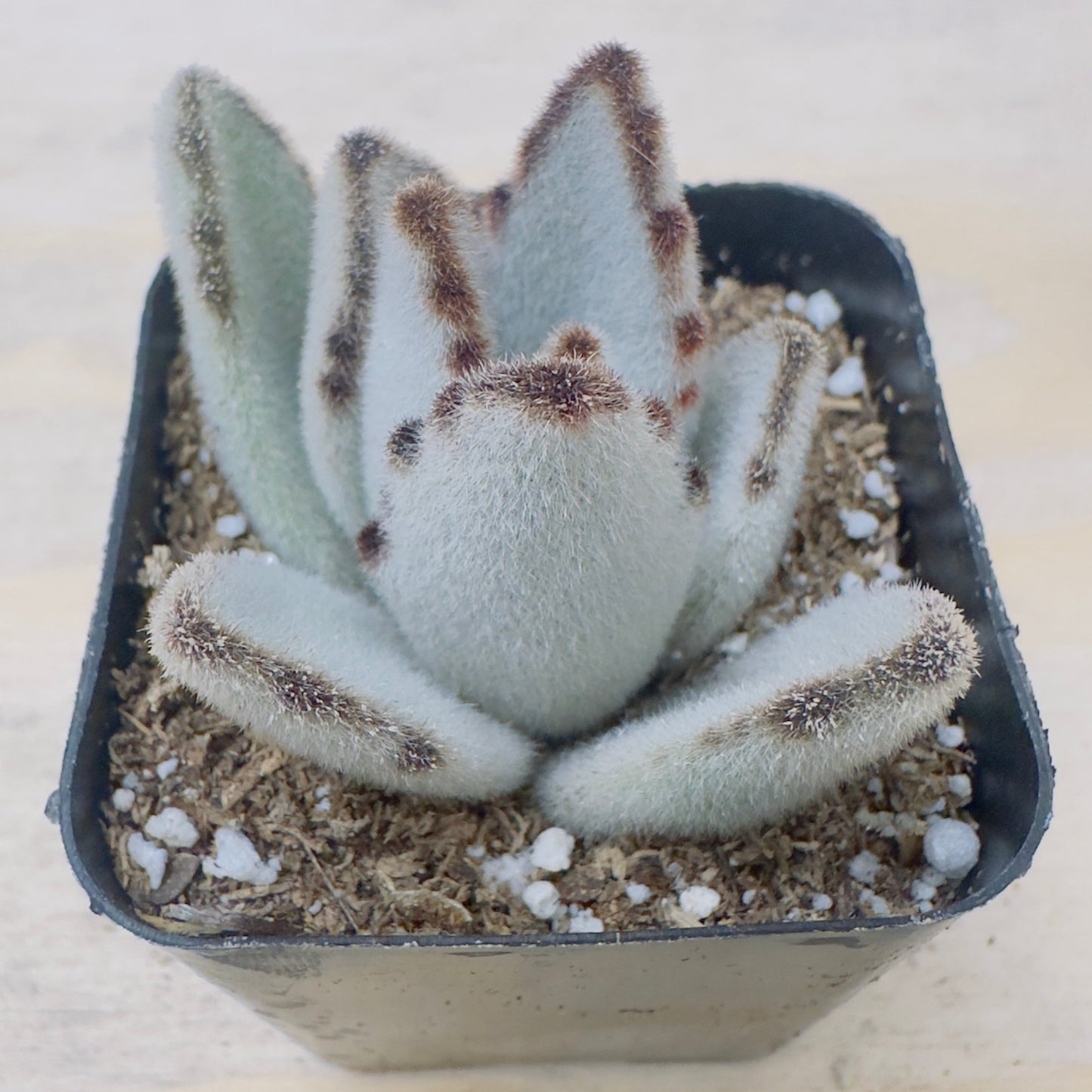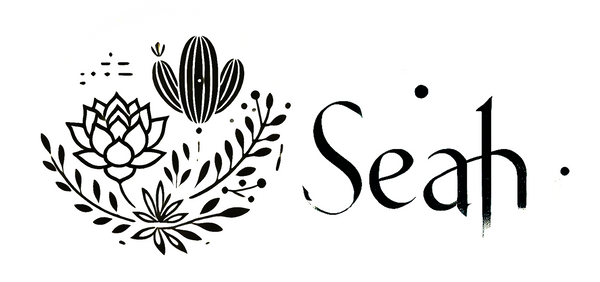Seah
Kalanchoe tomentosa 'Panda plant'
Kalanchoe tomentosa 'Panda plant'
In stock
Couldn't load pickup availability
Morphological Characteristics
Kalanchoe tomentosa ‘Panda Plant’, also known as Chocolate Soldier, is a fuzzy-leaved succulent native to Madagascar, belonging to the Crassulaceae family. It’s cherished for its soft, velvety appearance and contrasting leaf tips, making it both a tactile and visual delight in collections.
The plant features thick, oblong leaves densely covered in fine white hairs, giving them a gray-green, silvery hue. The leaf margins are lined with dark brown to reddish-brown markings, especially concentrated at the tips, which resemble a panda’s ears—hence the common name.
Mature plants form upright, branching shrubs and can grow up to 45–60 cm (18–24 inches) tall. The stems become woody with age. Though rarely flowering indoors, it may produce small, bell-shaped yellow-green flowers on tall stalks in optimal outdoor conditions.
Growth Habits
‘Panda Plant’ is a slow-growing, upright succulent, well-suited to pots and container gardens. It maintains a compact, shrubby form and may slowly branch at the base over time.
In dry and warm environments, it can live for many years with minimal care. Its fuzzy leaves help reduce water loss, allowing it to thrive in arid conditions.
Maintenance Points
-
Lighting: Prefers bright, indirect light to partial sun. Avoid harsh midday sun, especially in hot climates, which can burn the fuzzy leaves.
-
Watering: Water thoroughly when the soil is completely dry. Do not allow water to sit on leaves, as this can cause rot or fungal issues.
-
Soil: Use well-draining cactus or succulent soil. Consider adding sand or perlite to increase drainage.
-
Temperature: Ideal range is 18–29°C (65–85°F). Protect from frost—minimum safe temperature is around 5°C (41°F).
-
Fertilization: Apply diluted succulent fertilizer once a month during the growing season (spring and summer). No need to fertilize in winter.
-
Potting: Choose shallow pots with drainage holes. Repot every 2–3 years or when root-bound.
-
Humidity: Tolerates low humidity well. Avoid high humidity environments to prevent fungal issues.
Reproduction Method
Stem Cuttings:
-
Use clean shears to cut a 5–10 cm (2–4 inch) section.
-
Let the cutting callus for 2–3 days.
-
Plant in dry, well-draining soil and water sparingly until roots establish.
Leaf Cuttings (Less Common):
-
Full success requires removing the entire leaf base. Let it dry several days, then lay on moist soil.
-
Rooting may take 3–5 weeks but has a lower success rate than stem cuttings.
Additional Tips
-
Pest Control: Watch for mealybugs and spider mites. Treat with neem oil or insecticidal soap if infestations appear.
-
Disease Prevention: Avoid water splashing onto leaves. Ensure excellent ventilation to prevent mold or mildew.
-
Pruning: Trim leggy growth to promote a bushier shape. Remove dead or damaged leaves regularly.
-
Display: Ideal for windowsills, tabletops, or office decor due to its soft look and tidy form. Pairs well with smooth-leaved succulents for textural contrast.
-
Safety Note: Mildly toxic to pets if ingested. Keep out of reach of cats and dogs.
